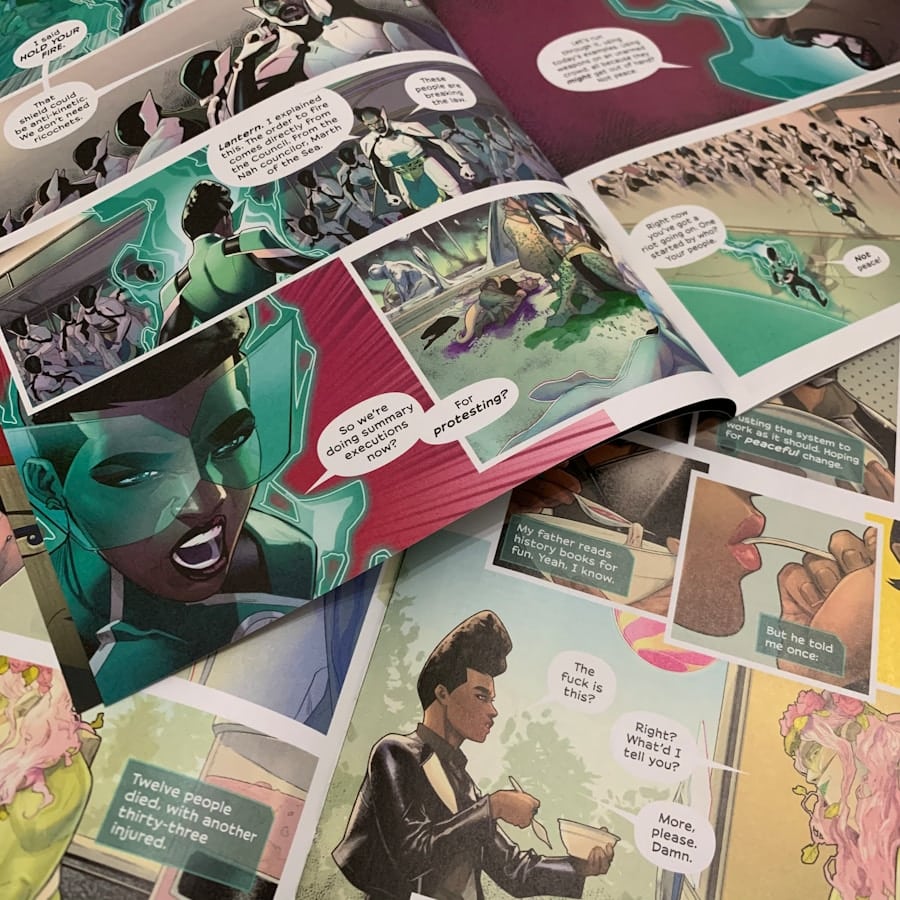The publishing industry has undergone significant transformations over the past few decades, with the advent of digital technology reshaping how content is created, distributed, and consumed. Among these innovations, augmented reality (AR) has emerged as a powerful tool that is redefining the landscape of publishing. By overlaying digital information onto the physical world, AR offers a unique way to engage readers, making books not just vessels of text but interactive experiences.
This technology has gained traction in various sectors, including education, entertainment, and marketing, leading to a surge in AR-enhanced publications that captivate audiences in unprecedented ways. The integration of AR into publishing is not merely a trend; it represents a fundamental shift in how stories are told and experienced. Publishers are increasingly recognizing the potential of AR to create immersive narratives that resonate with readers on multiple levels.
For instance, major publishing houses have begun to experiment with AR applications that allow readers to scan pages with their smartphones or tablets, revealing animations, audio clips, and additional content that enriches the reading experience. This evolution is particularly evident in genres such as children’s literature and educational materials, where interactive elements can significantly enhance comprehension and retention.
Key Takeaways
- Augmented reality is transforming the publishing industry by enhancing reader engagement and bringing stories to life.
- Interactive content is revolutionizing the way we experience non-fiction books, making learning more immersive and engaging.
- AR technology has the potential to revolutionize education and learning through AR-enhanced books, creating a more interactive and dynamic learning experience.
- AR is impacting children’s books and early literacy by providing a multi-sensory experience that captivates young readers and enhances their learning.
- Integrating AR into art and photography books offers a multi-sensory experience, expanding the reach of printed books in the digital age and creating a more immersive experience for readers.
Enhancing Reader Engagement with Interactive Content
Enhancing Reader Engagement
Traditional books, while valuable, often lack the dynamic elements that can capture a reader’s attention in today’s fast-paced digital environment. AR addresses this challenge by transforming static text into vibrant, interactive experiences that invite readers to participate actively in the narrative.
Interactive Storytelling
For example, a reader might point their device at an illustration in a book, triggering an animated sequence that brings the characters to life or provides additional context about the story’s setting. This interactivity not only captivates readers but also fosters a deeper connection with the material. Studies have shown that when readers engage with content through interactive elements, they are more likely to remember information and develop a personal investment in the story.
Creating a Communal Reading Experience
Publishers are leveraging this insight by incorporating quizzes, games, and multimedia content into their AR-enhanced books. Such features encourage readers to explore the material more thoroughly and can even facilitate discussions among peers, making reading a more communal and engaging activity.
Bringing Stories to Life with AR Technology

Augmented reality has the remarkable ability to bring stories to life in ways that traditional print cannot achieve. By merging the physical and digital realms, AR allows authors and illustrators to create multi-dimensional narratives that unfold before the reader’s eyes. For instance, in a fantasy novel, readers might witness a dragon soaring above the pages or interact with magical creatures that leap off the illustrations.
This level of immersion not only enhances the storytelling experience but also allows for creative expression that transcends conventional boundaries. Moreover, AR technology can be utilized to provide context and depth to narratives. For example, historical fiction can be enriched with AR features that transport readers to the time period being depicted, offering insights into cultural practices, clothing styles, and significant events.
This contextualization helps readers develop a more nuanced understanding of the story while simultaneously fostering empathy for characters and their circumstances. As authors and publishers continue to explore the possibilities of AR, we can expect increasingly innovative approaches to storytelling that challenge our perceptions of what a book can be.
The Future of Education and Learning through AR-Enhanced Books
The educational sector stands to benefit immensely from the integration of augmented reality into textbooks and learning materials. Traditional educational resources often struggle to engage students effectively, leading to disengagement and diminished learning outcomes. AR-enhanced books offer a solution by transforming passive reading into an interactive learning experience.
For instance, science textbooks can incorporate 3D models of complex structures like cells or molecules that students can manipulate and explore through their devices. This hands-on approach not only aids comprehension but also caters to various learning styles. Furthermore, AR can facilitate personalized learning experiences tailored to individual student needs.
With interactive elements that adapt based on user input or performance, educators can create customized pathways for students to explore topics at their own pace. This adaptability is particularly beneficial in diverse classrooms where students may have varying levels of prior knowledge or different interests. As educational institutions increasingly adopt AR technology, we may witness a paradigm shift in how knowledge is imparted and absorbed, making learning more engaging and effective.
How AR is Revolutionizing the Way We Experience Non-Fiction Books
Non-fiction books have traditionally been viewed as repositories of information—valuable but often dry and unengaging. Augmented reality is revolutionizing this perception by infusing non-fiction texts with interactive elements that make learning more dynamic and enjoyable. For example, a non-fiction book about marine biology could include AR features that allow readers to explore underwater ecosystems through virtual simulations or view 3D models of marine life.
Such experiences not only enhance understanding but also spark curiosity and inspire further exploration of the subject matter. Moreover, AR can provide real-time updates and supplementary information that enriches non-fiction narratives.
This immediacy transforms non-fiction reading from a static experience into an evolving dialogue between the reader and the material. As publishers continue to embrace AR technology, we can expect non-fiction books to become more engaging and relevant than ever before.
The Impact of AR on Children’s Books and Early Literacy

Interactive Storytelling
For instance, a picture book might feature characters that come alive when scanned with a device, prompting children to interact with them through games or educational activities. This interactivity not only makes reading more enjoyable but also supports literacy development by fostering essential skills such as vocabulary acquisition and comprehension. Research indicates that children who engage with interactive reading materials demonstrate improved language skills compared to those who read traditional texts alone.
Enhancing Parent-Child Bonding
Furthermore, AR can facilitate parent-child bonding during reading time by encouraging shared exploration of the content together. As parents and children navigate these interactive stories side by side, they create meaningful connections that enhance both learning and enjoyment.
Transforming the Reading Experience
Overall, the integration of AR into children’s literature has the potential to transform the reading experience, making it more engaging, interactive, and enjoyable for young readers.
Integrating AR into Art and Photography Books for a Multi-Sensory Experience
Art and photography books have long been cherished for their visual appeal; however, augmented reality takes this appreciation to new heights by offering multi-sensory experiences that deepen engagement with visual content. By integrating AR technology into these publications, artists and photographers can provide viewers with additional layers of context and interactivity that enhance their understanding of the work. For example, an art book might allow readers to view a painting in 3D or access video interviews with artists discussing their creative processes.
This immersive approach not only enriches the viewer’s experience but also democratizes access to art education. Readers can learn about artistic techniques, historical contexts, and cultural significance through interactive features that would be difficult to convey through text alone. Additionally, AR can facilitate virtual gallery tours or exhibitions within art books, allowing readers to explore collections from around the world without leaving their homes.
As publishers continue to experiment with AR in art and photography books, we can anticipate innovative ways for audiences to connect with visual culture.
The Potential for AR to Expand the Reach of Printed Books in the Digital Age
In an era dominated by digital media consumption, augmented reality presents a unique opportunity for printed books to reclaim relevance by offering experiences that cannot be replicated online. While e-books have gained popularity due to their convenience and accessibility, they often lack the tactile engagement that physical books provide. By integrating AR technology into print publications, publishers can create hybrid experiences that combine the best of both worlds—offering readers the sensory pleasure of holding a book while also providing interactive digital content.
This potential for expansion is particularly significant for niche markets or specialized genres that may struggle to compete with mainstream digital offerings.
By creating unique experiences that resonate with readers’ interests and passions, printed books can carve out a distinct space in an increasingly digital landscape.
As augmented reality continues to evolve within the publishing industry, it holds promise not only for enhancing reader engagement but also for revitalizing print media in an age where digital consumption dominates. The fusion of physical books with digital interactivity opens up new avenues for creativity and innovation in storytelling across genres and formats.
In a related article discussing the best software for literature review, researchers and scholars can find valuable tools to enhance their reading and analysis of printed books. By utilizing advanced software like MyAI Account, users can streamline their research process and gain deeper insights into the content of books. This technology can also be applied to the field of online arbitrage, as highlighted in another article on the best software for online arbitrage. By incorporating AR technology into the reading experience, printed books are transformed into interactive and engaging resources for readers of all ages. To learn more about how AR is revolutionizing the way we interact with printed books, check out this article.
FAQs
What is AR?
AR stands for Augmented Reality, which is a technology that superimposes digital information such as images, videos, or 3D models onto the real world, typically viewed through a smartphone or tablet.
How is AR being used to elevate printed books?
AR is being used to enhance the reading experience of printed books by adding interactive elements such as animations, videos, and 3D models that can be accessed through a smartphone or tablet. This allows readers to engage with the content in a more immersive and interactive way.
What are some examples of AR-enhanced printed books?
Some examples of AR-enhanced printed books include children’s books that come to life with animated characters, educational books that provide interactive learning experiences, and travel guides that offer virtual tours of destinations.
What are the benefits of using AR in printed books?
The use of AR in printed books can enhance engagement and retention, provide a more immersive and interactive reading experience, and appeal to a wider audience, including digital natives who are accustomed to interactive digital content.
How does AR technology work with printed books?
AR technology works with printed books by using a smartphone or tablet to scan specific images or markers within the book, which then triggers the display of digital content such as animations, videos, or 3D models overlaid onto the real-world view through the device’s camera.
Is AR technology widely accessible for readers?
Yes, AR technology is widely accessible for readers as it can be accessed through commonly available devices such as smartphones and tablets. Many AR-enhanced printed books also provide instructions or links to download the necessary AR apps for free.

